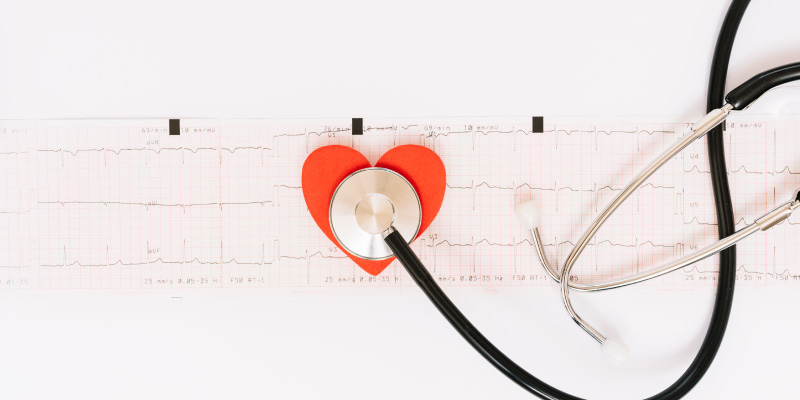Atrial Fibrillation or AFib is a condition where the heart beats rapidly or irregularly and increases the chances of heart attack, heart failure, and other heart diseases. It is one of the types of arrhythmia that can disturb the normal blood flow. This leads to an insufficient supply of blood to the body for performing various functions. Due to irregular blood flow, the blood can also form clots in the heart. These blood clots can also circulate to other parts of the body leading to a condition called ischemia (blocked blood flow).
What Happens in Atrial Fibrillation:
In AFib, the heart’s upper two chambers i.e. atria or atrium beat irregularly with respect to the heart’s lower two chambers i.e Ventricles. Normally, atria (upper chambers) squeezes first and then the ventricles (lower chambers). The timing of these contractions leads to normal blood flow. However, in case of Atrial Fibrillation, the heart electrical signals that manage and control this action are unable to function properly. And as a result, the atria start working their own thing.
Types of Atrial Fibrillation
- Occasional Atrial Fibrillation: This type of AFib is also known as Paroxysmal Atrial Fibrillation, where the symptoms may come occasionally and go. The symptoms usually last for a few minutes or hours. Sometimes, the symptoms may last for a week and episodes of AFib occur repeatedly. The condition may recover on its own, however, it may also need treatment so the best one can do is consult a doctor as soon as possible.
- Persistent Atrial Fibrillation: In this condition, the heart rhythm doesn’t go back to normal on its own. People having AFib may need treatments to restore the normal heart rhythm. This usually lasts for more than a week.
- Long Standing Persistent Atrial Fibrillation: Usually this type of AFib lasts for more than a year and the symptoms are continuous. Doctors use many treatments to stop this and restore normal heart rhythm.
- Permanent Atrial Fibrillation: In this condition, the episodes of AFib are permanent and the heart rhythm can’t be restored. To prevent and manage this condition, doctors prescribe certain medications and treatments.
Some of the Common Facts of Atrial Fibrillation

- In Atrial Fibrillation, the upper two heart chambers are affected, which disrupts the flow of blood to the ventricles and other body parts.
- Sometimes, the episodes of AFib may come or go, in other cases it can be persistent and require treatment. For this, one needs to consult a doctor and get the best possible solution.
- Although the condition is not a serious problem, it can further cause other chronic heart problems if left untreated.
- According to the estimation of Centers for Disease Control and Prevention (CDC), between 2.7 million and 6.1 million people have Atrial Fibrillation in the United States.
- It is also estimated that as people in the U.S age, this number increases.
- According to the CDC report, women are more likely prone to this disease than men.
- It is also reported that People of European descent are at higher risk of having AFib than African Americans.
- High blood pressure is the most common risk factor and accounts for about 1 in 5 cases of Atrial Fibrillation.
Causes of Atrial Fibrillation
Atrial Fibrillation occurs when the heart’s upper chambers experience chaotic electrical impulses, which results in rapid heart rate. People with Atrial Fibrillation have heart rate ranging from 100 to 175 beats per minute.
The heart has two upper chambers (atria) and two lower chambers (ventricles). When these chambers don’t work properly together because of abnormal electrical impulses, it causes Atrial Fibrillation. Other cause of AFib includes:
- High blood pressure
- Congestive heart failure
- Heart attack
- Abnormal heart valves
- Coronary artery disease
- Congenital heart defects
- Hypertrophic cardiomyopathy
- Hypothyroidism or Hyperthyroidism
- Pericarditis
- Metabolic imbalance
- Binge drinking
- Lung diseases
- Stress due to surgery or other illnesses
- Viral infections
- Sick sinus syndrome
- Previous heart surgery
Risk factors includes:
- Increased age
- Being male
- Being white
- Family history of AFib
- Structural heart defects
- Heart disease
- History of heart attacks
- History of heart surgery
- Metabolic syndrome
- Thyroid conditions
- Obesity
- Diabetes
- Lung disease
- Drinking alcohol
- High-dose steroid therapy
Symptoms of Atrial Fibrillation
People having AFib may experience following symptoms:
- Heart palpitations
- Skipping heart beat
- Heart beats too fast
- Fluttering
- Flip-flopping in the chest
- Chest discomfort or pain
- Pressure in the chest
- Fatigue
- Shortness of breath
- Lightheadedness
- Weakness
- Dizziness
- Fainting
- Intolerance to exercise
- Confusion
Diagnosis of Atrial Fibrillation

To diagnose Atrial Fibrillation, doctors first need to monitor the electrical impulses of the heart. They may also perform some tests, which include:
- Blood Tests: To check for liver functioning, kidney function, and thyroid function. Blood test also gives the idea of excess protein present in the arteries.
- Electrocardiogram (EKG): It is performed to know how fast the heart is beating and electrical activity of the heart.
- Chest X-ray: This helps in determining lung disease or other respiratory disease that may cause Atrial Fibrillation.
- Echocardiogram: Helps in making videos and images of the heart with the help of sound waves. This helps in determining whether there is any heart defect or not that causes AFib.
- CT scans: This test is performed to monitor the 3D structure of the heart.
- MRI: This test also creates images and videos of the heart with the help of radio waves and magnets.
- Stress Test: This test is performed to know the difference in heart’s working when a person is active and at rest. Doctors suggest the patient walk on a treadmill and the sensors are connected to the EKG machine which monitor the electrical activity of the heart.
Other tests include Holter monitor, event monitor, transesophageal echocardiogram, etc.
Conclusion
Atrial Fibrillation is not a life-threatening condition, however, it can invite other serious conditions if not treated properly. Consult the doctor or professionals in case one notices any symptoms. Following the prescribed preventive measures and treatments can help in restoring the normal heart rhythm.




